What will the weather be on RAGBRAI? With luck, not as bad as Soggy Monday or Saggy Thursday
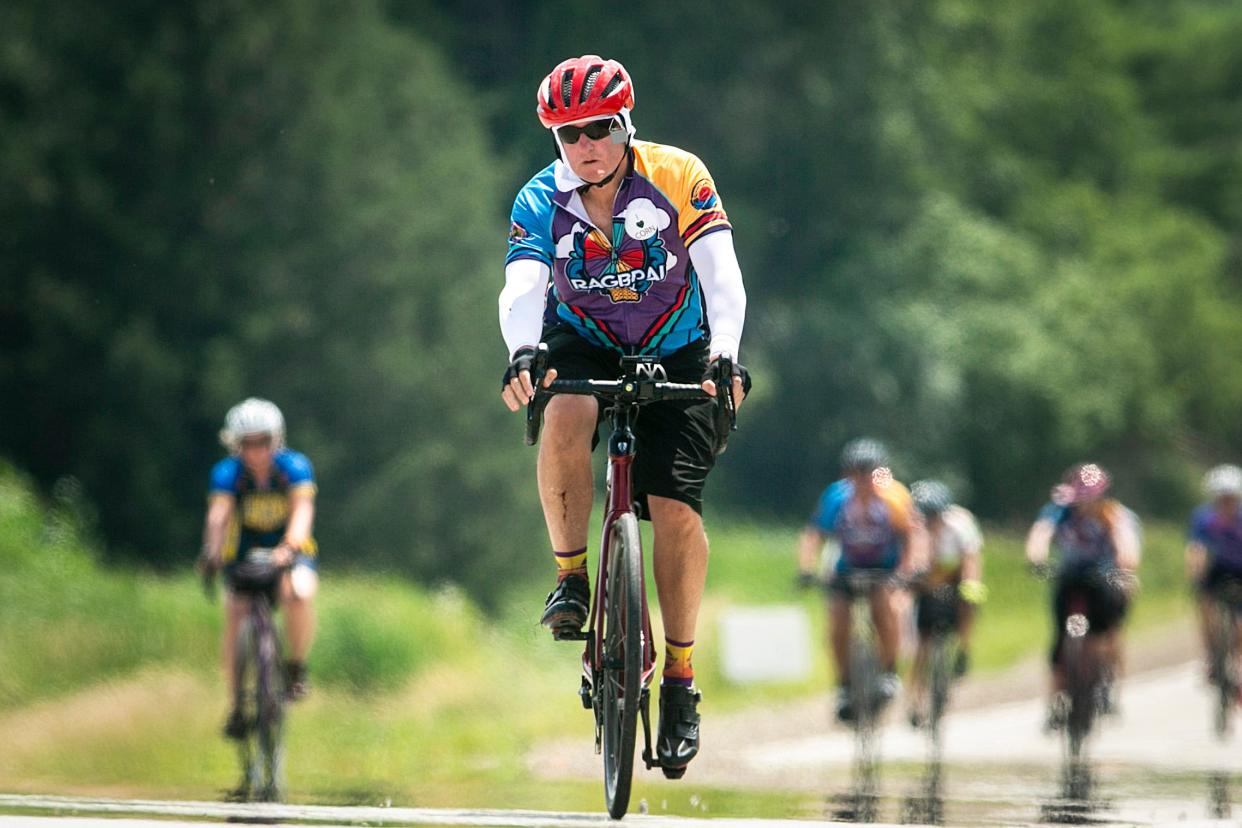
This article will be updated as forecasts change.
The 50th anniversary edition of RAGBRAI will be memorable.
Let's just hope it's not for the sort of reasons a couple of previous editions of the ride were: brutal, unrelentingly tough weather.
So what's in store for the ride that begins Sunday?
It's Iowa. It's summer. It's hot. Really hot.
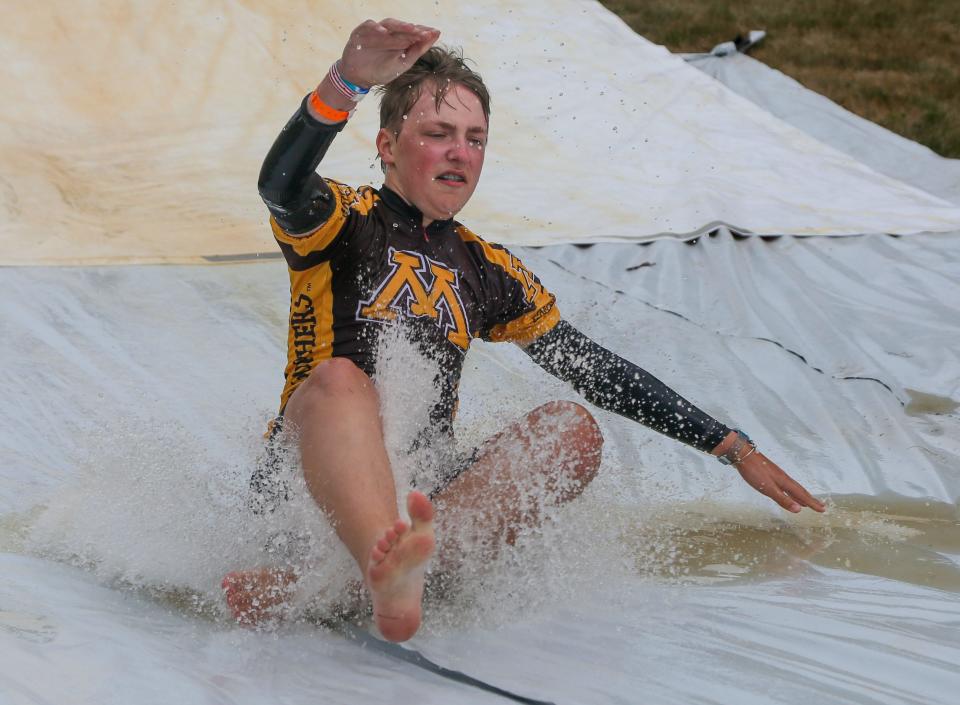
The weather forecast for the Register's Annual Great Bicycle Ride Across Iowa, July 23-29, should come as no surprise: As usual, Iowa in the last week of July will be hot, with at least one day in triple digits.
Despite that, the ride looks to be headed for a reasonable start. On Sunday, the long, hilly first day, the National Weather Service calls for a high in the upper 80s with a slight headwind facing riders at times along the 72-mile stretch from Sioux City to Storm Lake. The overnight low is expected to be a comfortable figure in the low 60s, and there's no rain expected ― fine camping weather.
More: Storm Lake issues order to conserve water with RAGBRAI riders rolling into town Sunday
Monday, on the ride to Carroll, the temperature will likely inch up a little to the lower 90s, the weather service says, with riders facing a stiff headwind. It's on Tuesday that the heat really begins to build, rising toward the mid-90s on the route to Ames.
More: See the final route maps for RAGBRAI's 50th anniversary ride
Again, the riders could face a headwind, but not as strong as Monday's.
Wednesday is when the heat begins to gets serious. As an expected record-setting number of riders set out for Des Moines, the weather service is calling for a high in the upper 90s and a heat index, or "feels like" temperature, of up to 105. Fortunately, it's the shortest, flattest stretch of the ride ― 55 miles with 1,242 feet of climb — but the southerly wind is expected to pick up and get gusty, requiring additional exertion from the southbound riders.
More: RAGBRAI parties are happening all over Des Moines. Here’s where you can celebrate.
On Thursday's trek to Tama-Toledo ― the longest ride of the week at 89 miles and with the most elevation gain, 4,218 feet ― the high is expected to be close to 100 degrees. But there's a good chance of a strong tail wind, the weather service said. There is a chance of showers late Thursday, and a low around 70 could make it a bearable night for the tired riders.
Forecasts beyond that are more difficult, but the early prediction for Friday's ride to Coralville is a high in the low 90s, and Saturday's to the end point in Davenport may be, as well.
More: 'Shift: The RAGBRAI Documentary' will play along the 2023 route. Find all the screenings
What about the smoke?
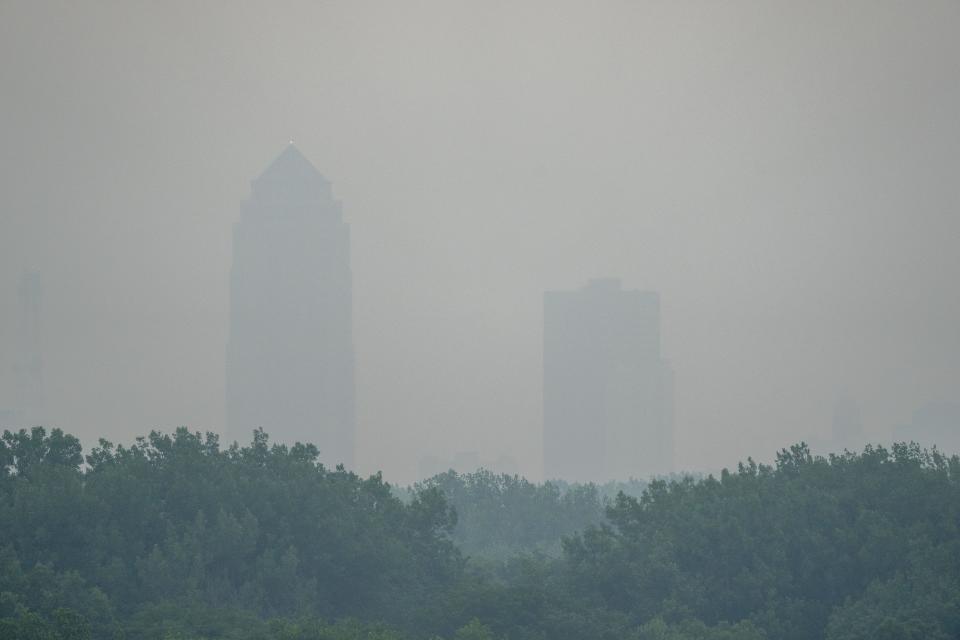
High-temperature forecasts are not unusual for RAGBRAI. But there's a wild card this year: the smoke from Canadian wildfires that has plagued Iowa for most of this summer. Last Saturday, July 15, was particularly bad in central Iowa, with the weather service advising people who have breathing issues to stay inside.
The Canadian government's Wildfire Smoke Prediction System, called FireWork ― accessible at weather.gc.ca/firework ― provides a 72-hour, animated projection of where the smoke plumes will be, not only in Canada but in the U.S. Sunday, it's showing some patchy smoke across Iowa, but in the lower levels of particulate concentration. Monday's smoke is expected to be a little thicker as a more intense pall settles over Minnesota, Iowa's neighbor to the north and the haze should continue at least through Wednesday morning.
What if it migrates toward Iowa during RAGBRAI?
Dr. Andy Peterson, a sports medicine specialist at the University of Iowa Hospitals & Clinics who races bikes and has ridden a few RAGBRAI days, said the particles in the smoke can prompt an immune response by the body that manifests itself as irritation of the lungs, throat and nasal passages.
If the symptoms are mild, he said, "It's definitely OK to push on through."
But if you find yourself short of breath, or unable to achieve your usual level of exercise capacity, caution is in order ― especially if you have an underlying condition like heart disease, asthma or chronic obstructive pulmonary disease, better known as COPD, Anderson said.
Those who can tolerate it might try wearing an N95-grade face mask while riding, he said.
"They do a good job keeping out particulate matter if you're comfortable wearing one," he said. "That said, wearing one can be kind of challenging while exercising."
Historically bad days on RAGBRAI
Whatever this week brings, it will be difficult to rival the two most grueling days in RAGBRAI history, so infamous that the ride's organizers made special patches for the riders who endured them. Here's a look at Soggy Monday and Saggy Thursday.
More: As RAGBRAI grows from lark to legendary at age 50, it still offers glimpses of 'authentic Iowa'
Soggy Monday: July 27, 1981
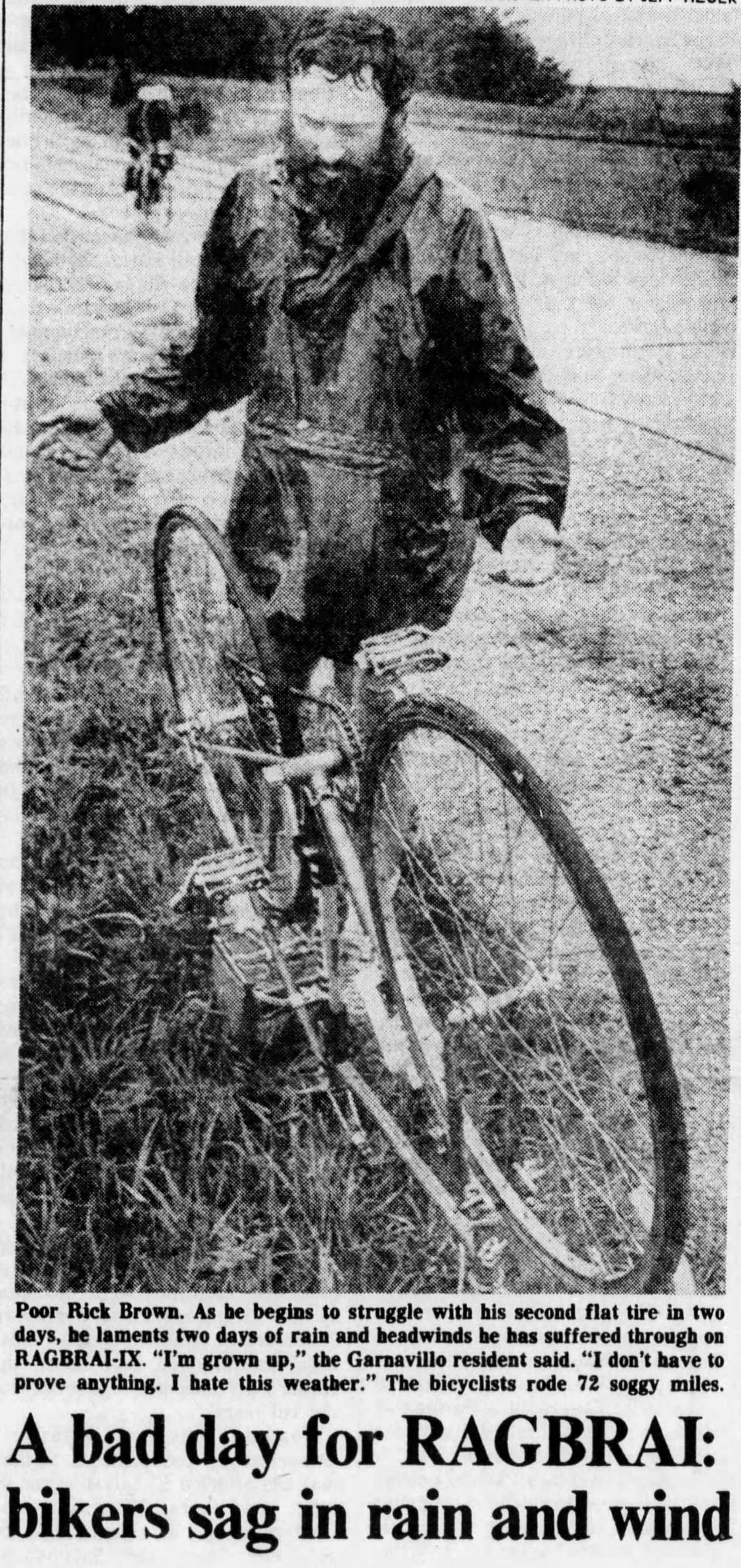
On July 27, 1981, a steady rain and stiff headwind hit riders as they rode 72 miles between Mapleton and Lake City. In an anomaly for late July in Iowa, temperatures never rose above 55 degrees, making RAGBRAI feel more like the annual BRR (Bike Ride to Rippey) in February.
Drivers of cattle and pickup trucks took advantage, charging shivering riders to haul them to Lake City. Many riders left the ride entirely, whittling down RAGBRAI IX to the most hardcore cyclists. In Wall Lake, women from the local Lutheran church lit the fireplace of the shelter house as they served food.
Donald Kaul, a RAGBRAI founder and a Register columnist, wrote that he would rather have been in jail than on RAGBRAI that day because at least he would have been dry and warm behind bars.
"This isn't a bike trip. It's Moby Dick. You expect some bearded guy with a harpoon to come running out of a farmyard at you yelling, 'Thar she blows!'" Kaul wrote. "One more day like this one and we can change the name of the ride to 'The Influenza Grand Prix.'"
Riders bought out the inventory of a clothing store in Schleswig, layering up to help them stay warm, wrote John Karras, Kaul's RAGBRAI co-founder and also a Register journalist. Campgrounds in Lake City were flooded, so residents housed the 6,000 sodden riders in garages, campers, the high school gym and any other shelter available.
Karras predicted Soggy Monday would be remembered "for a long time to come."
"They'll remember it in pain, of course, but they'll remember it," he wrote. "Indeed, it promises to become the standard against which all really rotten bicycling days will be judged."
Saggy Thursday, July 27, 1995
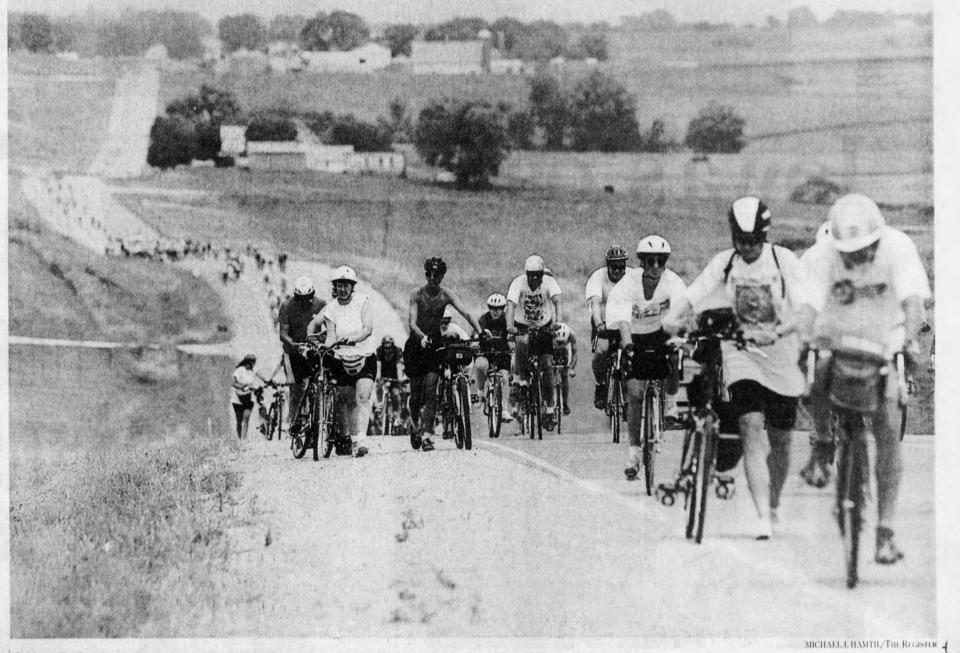
Fourteen years to the day after Soggy Monday, Mother Nature went to the other extreme.
The hilly, 74-mile route from Tama-Toledo to Sigourney on July 27, 1995, already was expected to be the toughest of the week. Then temperatures in the mid-90s and a heat index of 105 degrees baked riders. Headwinds of 35 mph made it so hard to ride that many had to pedal while going downhill. On top of that, most riders were still tired from the previous day's hot and hilly 98-mile ride — or 104 miles with the optional century loop.
At least one-third of the 10,000 riders "sagged" ― boarding the ride's support-and-gear vehicles, better known as SAG wagons. That gave the day its nickname: "Saggy Thursday."
As on Soggy Monday, farmers transported some riders in pickup trucks and wagons. Then-RAGBRAI Coordinator Jim Green borrowed a 40-foot semitrailer and a school bus to help transport the mass of spent riders to Sigourney.
Green nevertheless touted the hills, heat and headwinds as part of the ride's attraction.
"A cyclist likes this because this is a challenge," Green said at the time. "It's strictly you against the elements, and that's one of the great things about cycling."
Bill Early, now 65, of Harlan, rode through Saggy Thursday on a tandem bike with his father, who was in his 70s and had a heart condition. They were two hours late for a planned rendezvous with his sister in Victor because the south wind was so strong. At a time before cellphones made communication easier, Early worried his sister would leave before they found her and he could get his dad off the bike.
“I refer to it as the 'Sigourney Death March,'” Early said. “When we got there and I found her, I collapsed into the ditch. A half-hour later I was still breathing hard.”
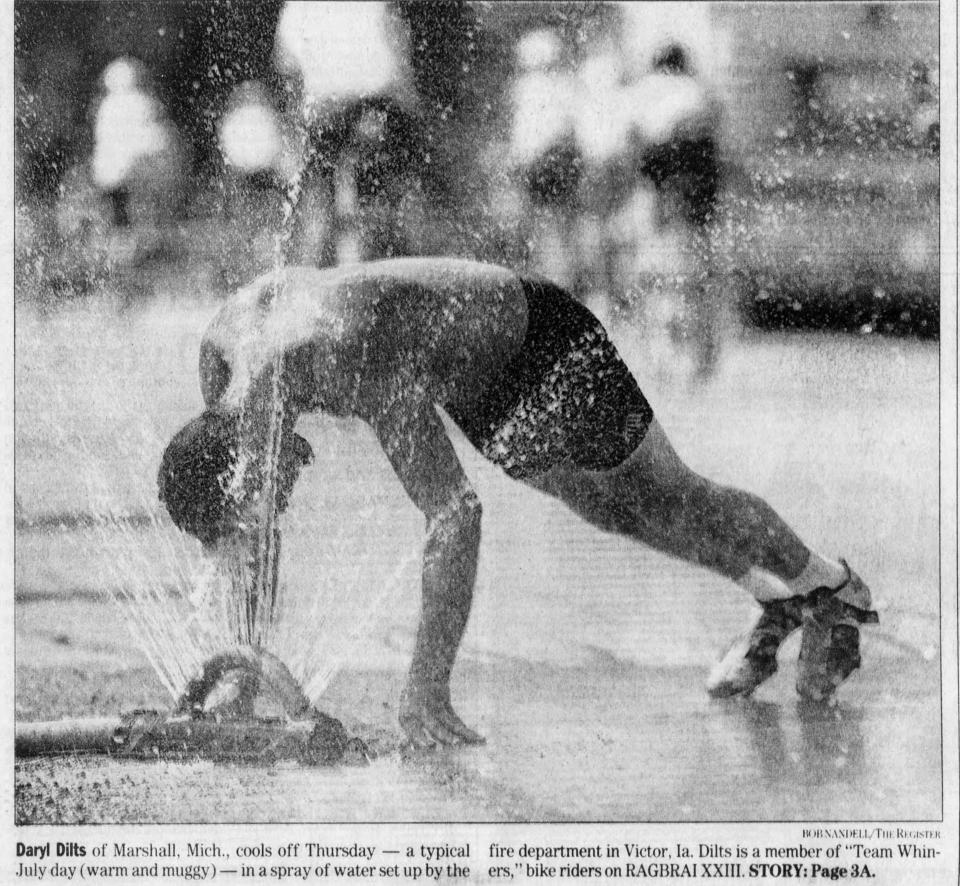
Early's father sagged in with Early's sister, and Early's nephew hopped on the back of the tandem. Early and his father completed the rest of the ride, and over time, it became a treasured memory.
“That week of RAGBRAI riding with him on a tandem and sleeping with him in a tent, I probably spent more hours with him in close contact on that ride than any month of my life,” Early said.
Philip Joens is riding his 18th RAGBRAI. He has completed the river-to-river trek six times. He covers retail, real estate and RAGBRAI for the Des Moines Register and can be reached at 515-284-8184 at pjoens@registermedia.com or on Twitter @Philip_Joens.
This article originally appeared on Des Moines Register: Soggy Monday, Saggy Thursday remembered as RAGBRAI's hardest days

